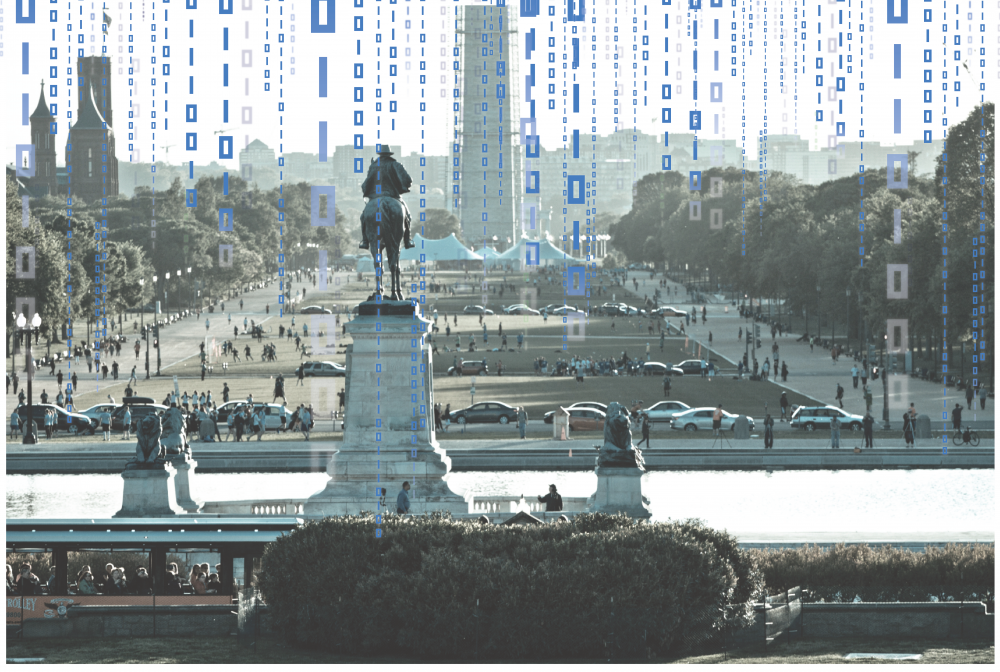This blog is an excerpt from GovLoop’s recent guide, All Data, All Uses: How Data and Operational Intelligence Drive Public Sector Mission Success. Download the full guide here.
Splunk helps you unlock the hidden value from your machine data. And with the ability to bring in insights from your other tools, you get value from the full spectrum of your data, not just a subset. With it, you can collect, index, search, analyze and visualize all your data in one place. Splunk provides a unified way to organize and extract real-time insights from massive amounts of machine data from virtually any source.
Splunk provides a real-time data platform that enables Operational Intelligence. Unlike legacy data platforms and separated monitoring tools, Splunk provides a single, massively scalable platform that collects data once and delivers the visibility to support multiple, discrete use cases.
The platform provides data driven intelligence for security, IT operations, analytics and more. It includes a rich ecosystem of apps that allow you to retire multiple legacy tools for greater value, cost savings and simplicity. With the Splunk platform, government agencies can work smarter and faster, and address key security and IT operations needs.
This potential for big data analytics to serve all areas of government becomes clear when you break down how government needs to use Operational Intelligence to support three main public sector mission pillars: protect, serve and grow.
Protect
Government agencies face many challenges, but few have grown more recently, and more quickly, than cybersecurity threats. Our national security and way of life depend on safe, secure and robust cyber defense. However, even with world class technology, eliminating cyberattacks and breaches continues to be an uphill battle.
To increase resiliency against cyber and other threats, government agencies must improve visibility to understand events happening on their networks. This can be done with Operational Intelligence via Splunk’s platform.
The Splunk platform, with security solutions for security information and event management (SIEM) and user behavior analytics, provides advanced offerings for security analytics. Leveraging this scalable platform, Splunk User Behavior Analytics (UBA) applies unsupervised and supervised machine learning to detect anomalies, breaches and identify advanced attacks (attacks without signatures). Integrated with UBA, the Splunk Enterprise Security solution provides the real-time monitoring of known threats and incident response capabilities to confirm, pinpoint and take action on threats. From national security to homeland security to local law enforcement and public safety, the Splunk Platform offers agencies the operational insight into cybersecurity threats that they need.
Serve
Delivering better service to citizens and government employees is critical to every mission and program. In fact, the public sector’s success depends on its ability to provide the populace with easy access to resources and services, and it’s built complex infrastructures around them and the public’s ability to retrieve them. It is imperative that all levels of government be able to quickly, effectively and efficiently deliver these services to their citizens to fulfill their serve mission pillar.
Operational Intelligence and data play a part in the delivery of these services. The Splunk platform can be positioned as the monitoring and analytics foundation that supports the key tenets of each of these most basic but necessary services: optimizing resource use, consolidating infrastructure, sharing IT resources and providing communications frameworks associated with each mission. A key to mission success is data centric monitoring and analytics. The Splunk platform, with the IT Service Intelligence (ITSI) solution, provides breakthrough visibility into the health and key performance indicators of IT services. This solution helps overcome and potentially replace traditional IT silos and delivers a central, unified view of critical IT services. It uses advanced analytics driven by machine learning to highlight anomalies, detect root cause and pinpoint areas of impact.
Grow
A broad range of programs is in place to help the government evolve and grow. But this doesn’t necessarily mean creating “big government.” Rather, it means creating a more scalable and agile government.
Some programs help the government grow by subtraction. Programs that mandate government transparency, efficiency, accountability and public and private sector innovation help the government grow in new and better ways. Some of the supporting initiatives include open data, the National Spatial Data Infrastructure, data center consolidation and green energy. Each supports delivering a better — not necessarily bigger — government.
The Splunk platform includes a large suite of mathematical, statistical and visualization capabilities to evaluate and model the machine data streaming through the platform. As agencies consider opportunities to find efficiencies and provide better service, the ability to apply these advances analytics against time-series data could mean the difference between understanding and defining a response and not even realizing there was an opportunity to innovate and grow.
This capability applies to every use case we have described, from the emerging DevOps practice to cybersecurity and agile IT operations.
Download the full guide here.






Leave a Reply
You must be logged in to post a comment.